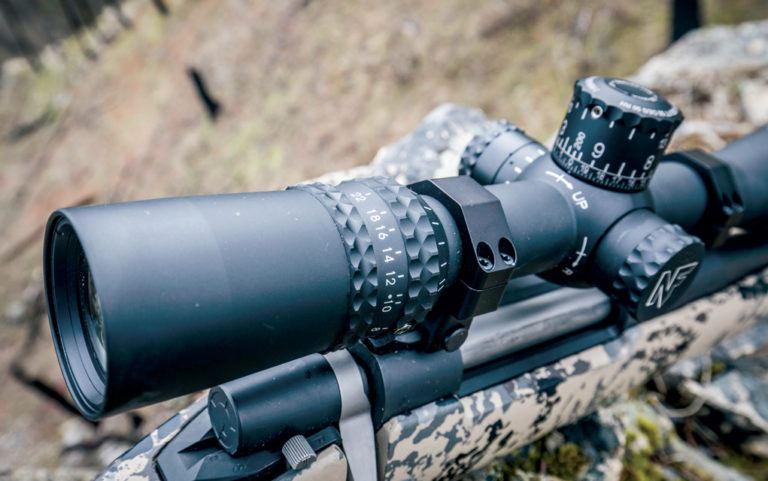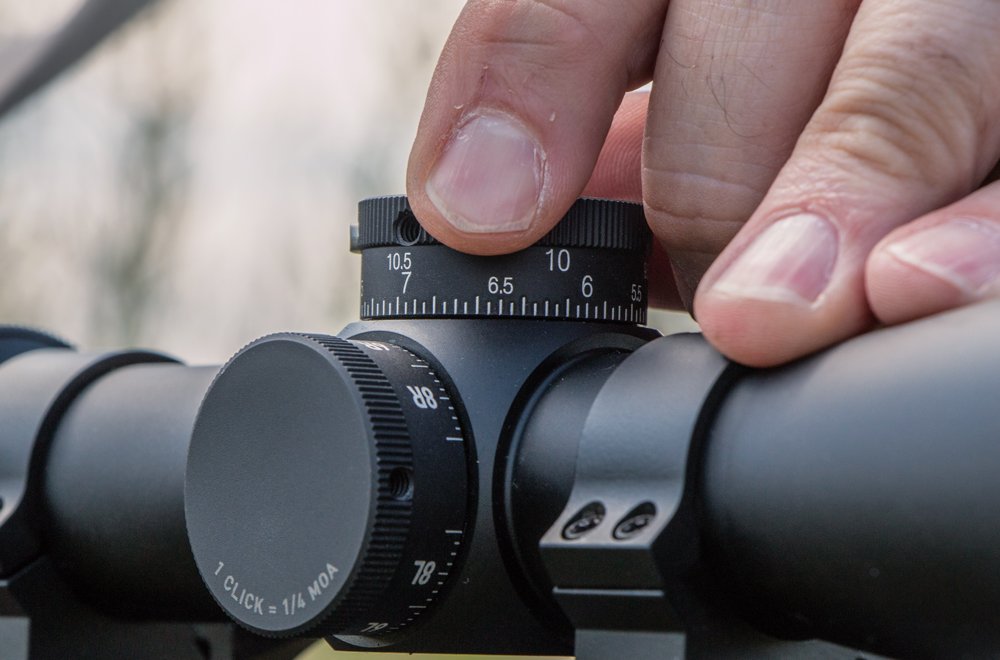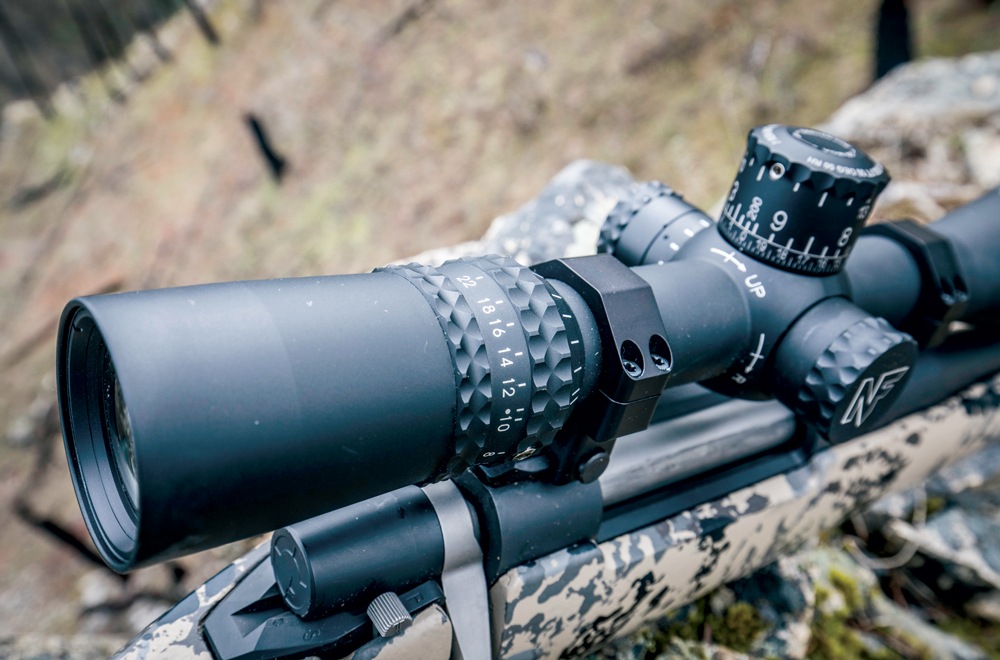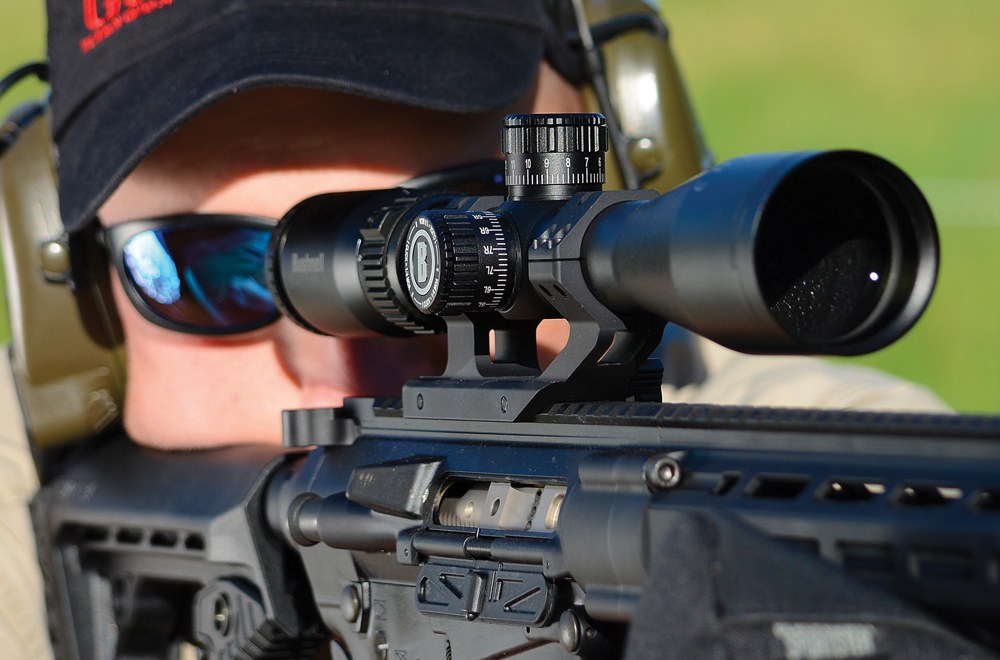
Improved accuracy can be as simple as a few scope adjustments to sharpen your view and relieve eye strain.
Some things to know about focus and your rifle's scope:
- Many riflescopes are improperly fitted to the shooter.
- A simple adjustment almost always results in improved accuracy.
- Ocular focus ensures the reticle is properly focused for your eye.
- Properly adjusted, your eye won’t strain trying to focus on the reticle.
- Parallax is where objects at different distances appear to change position when your head moves.
- Many scopes have parallax adjustment knobs to place reticle and target on the same focal plane.
Most of my students have had one thing wrong with the setup of their rifles when they start a course (this includes military and police snipers, as well as recreational shooters). The improper setup has a direct impact on their ability to shoot as good as they should and, once we change it, there’s almost always an instant improvement.
This means that there’s a good chance you have this problem, too — and it just might be holding you back.
The common issue is not having the riflescope adjusted for the particular shooter. This doesn’t just apply to having the scope mounted in the correct position or the stock’s cheek piece (comb) adjusted to the proper height. The most common error I see is not properly adjusting the scope’s ocular focus to the shooter’s eye.
What Is Ocular Focus?
The ocular focus ensures that the reticle in the scope is properly focused for your eye. It’s typically adjusted by turning the adjustment ring closest to your eye; however, sometimes the entire ocular housing must be turned.
If your eye becomes fatigued, or if you have trouble keeping the reticle in focus while you’re shooting, this is likely a problem on your riflescope.
The best way to adjust the ocular focus is to have a friend help, but it can be accomplished on your own.
1. First, have your friend place a white sheet of paper halfway down the barrel (or, if you don’t have any friends, position your rifle near a light-colored wall a few feet in front of the muzzle).
2. Next, get on the rifle with your eyes closed and only open your shooting eye once you’re in a comfortable position. If you need to adjust your head’s position in order to see clearly through the scope, that’s a good clue that you need to adjust your scope’s mounting position or adjust your cheek rest.
3. Once you can see clearly through the scope, quickly glance (one or two seconds) at the reticle and then close your eye. Then, make a bold adjustment to your ocular focus and re-open your eye for another quick glance. Make a determination on whether the reticle’s image/focus is better or worse than last time. There’s no need to over-think this process or make an overall determination immediately. Better or worse is all we care about right now.

A quick glance is important — if you stare too long, then your eye will play a trick on you and work to focus the reticle’s image.
Keep making bold adjustments to your ocular focus in each direction until you have figured out where the best/crisp image of the reticle is.
4. Now that it’s adjusted properly, you’ll be able to shoot better because you’ll be able to clearly focus on the reticle and not strain. However, the ocular focus is only half of the “focus” battle.
Parallax/Target Focus
Your scope is now focused to your eye, but it’s not focused on the target. There is no perfect focus for the target because it changes with different target distances.
Many (most) hunting scopes don’t have an adjustment for target focus — you’ll still be better off for having adjusted your ocular focus properly. However, most higher-end hunting scopes and tactical-style scopes have a parallax/target focus knob that you should use whenever you shoot at a new distance.
What Is Parallax?
Parallax is the name of the phenomenon that makes objects at different distances appear to change position when you move your head. For an example, place a finger from each hand in front of your face at different distances and line them up with your eye. Now, move your head from side to side and notice how your fingers are no longer lined up. That is the effect of parallax.
In your scope, the target’s image is focused at one location within your scope. If that location is different than where your reticle is located, then you’ll notice parallax when you move your eye side-to-side. The goal is to get the target’s image and the reticle on the same focal plane so that they move together (as if one finger was directly behind the other).
The parallax knob (or target focus knob depending on what your scope’s manufacturer calls it) moves the location of the target’s image in your scope. You can use the distance markings on the parallax knob to get close, but the only way to check it for sure is to adjust the knob until the target’s image is clear.

Some scopes have an adjustable objective. This is not the same as adjustable parallax or target focus. Instead, it means that the objective housing (the lens facing the target) turns to adjust for target focus. It does the same thing as a side-focus knob, but I much prefer the knob on the side because it’s easier to adjust. Don’t specifically hunt for an adjustable objective scope — instead, look for one with an adjustable parallax or target focus (regardless of how that particular scope adjusts for it).
Once you’ve done this, you’ll have no parallax issues (which can make you miss with imperfect head position) and your reticle and target will be clear (without that sensation of having to focus on one or the other).
I’m going to make a bold claim: Properly adjusting these focus settings for your eye and the particular target you’re shooting will make you a better shooter.
This article originally appeared in the Winter 2017 issue of Gun Digest the Magazine.

Next Step: Get your FREE Printable Target Pack
Enhance your shooting precision with our 62 MOA Targets, perfect for rifles and handguns. Crafted in collaboration with Storm Tactical for accuracy and versatility.
Subscribe to the Gun Digest email newsletter and get your downloadable target pack sent straight to your inbox. Stay updated with the latest firearms info in the industry.


![Best Concealed Carry Guns In 2025 [Field Tested] Wilson Combat EDC X9S 1](https://gundigest.com/wp-content/uploads/Wilson-Combat-EDC-X9S-1-324x160.jpg)


![Best 9mm Carbine: Affordable PCCs [Tested] Ruger Carbine Shooting](https://gundigest.com/wp-content/uploads/Ruger-Carbine-Shooting-100x70.jpg)
![Best AR-15: Top Options Available Today [Field Tested] Harrington and Richardson PSA XM177E2 feature](https://gundigest.com/wp-content/uploads/Harrington-and-Richardson-PSA-XM177E2-feature-100x70.jpg)

I wonder if your eye glasses should be used during scope setup or is it better to setup the scope without eye glasses?